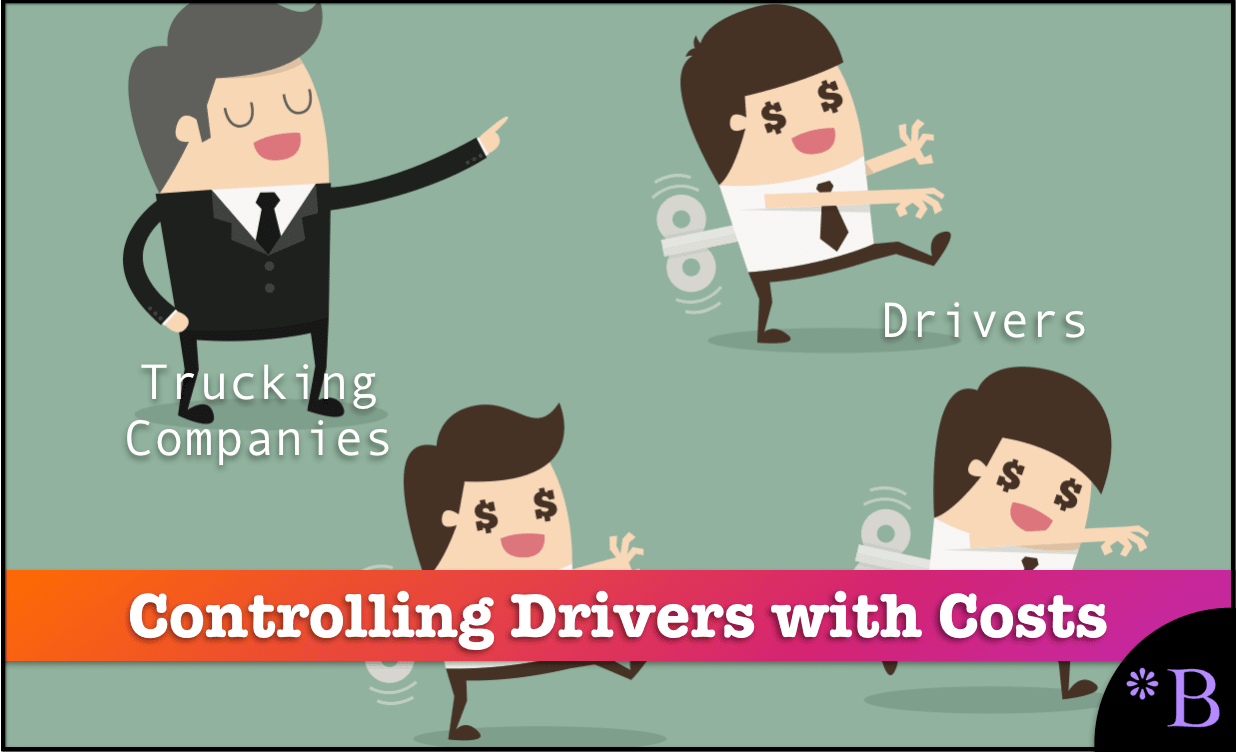The Real Story on How Trucking Companies Control Drivers With Training Costs
Executive Summary
- The trucking industry has a strategy of making drivers work bad trucking jobs by establishing timelines until training does not have to be paid back.

Introduction
As part of a long term strategy to keep the pay of drivers down, the trucking industry has developed a highly cynical approach for keeping disgruntled drivers continuing to drive for them after they lied to them to get them into truck driver or CDL (commercial drivers license) training (at the cost of the driver).
See Our References
Our references for this and other related articles can be found at this link.
The Truck CDL Training Scam
Based on Federal’s estimated cost of $2,500 per worker, they calculated that the firm would lose about $200 per truck annually without a contract. But when workers were required to sign either a twelve or eighteen month contract, training workers produced more than $4,000 in estimated profit per truck per year. In other words, training contracts designed to keep workers from quitting because of the debt taken on may be necessary for companies using almost entirely inexperienced labor, like Federal, Advanced or Leviathan, to be profitable. Thus, many of the workers who try out trucking every year to so under a modern form of debt peonage. – Steve Viscelli
This is coercion on the part of the trucking companies, and they know what they are doing when they draw many new truck drivers into the industry. They know what percentage of them will leave and what it takes to make them stay a little longer. With trucker driver turnover estimated at 300% per year, just making a disgruntled driver drive even a few more months is hugely important for the trucking companies. Generally, a new driver must drive 120,000 miles before they work off the debt of their training and housing. That is across the country roughly 40 times.
However, these trucking companies have no interest in making the job of being a driver sustainable. These trucking firms could ask for regulation by the government to keep from perpetuating the ruinous competition that has plagued the industry since the deregulation of the Motor Carrier Act of 1980, however they do not do this either. Instead, they push for more deregulation, including lowering the minimum driving age from 21 to 18. This is curious, because the chief lobbying group for the trucking industry, the ATA, opposed the deregulatory Motor Carrier Act of 1980.
The trucking industry also worsens conditions by gaslighting the public as to how bad the job of truck driver has become. Here is an encapsulation of the argument from the trucking industry.
The industry and its advocates claim there is little they can do about their labor troubles. If they raise pay and improve working conditions, they say, they will be priced out of the market. They insist that their pay rates are simply the outcome of natural market processes of supply and demand. But it is not that simple trucking companies have collectively developed a number of widespread and sophisticated labor supply and management strategies to ensure profit. These strategies keep wages artificially low, coerce workers to stay in the job longer than they want to and shift risks and costs onto workers and the public. – Steve Viscelli
First, this sounds like a strong argument against unfettered markets by the trucking companies, and an argument to increase regulation of the industry. If the trucking companies are helpless to improve the pay and working conditions of trucking companies, perhaps the Motor Carrier Act of 1980 should be repealed. It is now clear that that this act was passed under pretenses and false information provided by the trucking industry. This should not be viewed as an extreme position. The Motor Carrier Act of 1980 simply reverses the Motor Carrier Act of 1935. Unlike the false claims by industry support think tanks, university economists and trucking companies, the four decades of experience since deregulation (in addition to looking at the deregulated period before 1935) clearly show that trucking requires much higher degrees of regulation than we have now. This is explained in the following quotation.
What is horrifying is that the US government subsidizes this CDL training through Pell Grants or Workforce Investment Act funds, without spending any effort in auditing the extraordinary turnover of new truck drivers. The questions should be asked..
Question #1:
“Why should the government subsidize training when so few of the students stay in the field of truck driving.”
Question #2:
“Why is the government subsidizing the training that should be paid for by trucking companies. Truck driver training is not general education. Its only purpose is to drive a truck. Why aren’t trucking companies training job applicants themselves without any funding from either the government or committment requirements from prospective drivers?”
Conclusion
Driver training costs are put onto the driver, and the drivers must either continue driving or pay back their training costs. This is a scam that the trucking industry uses to cycle through a large number of truckers that are then made to drive when they do not want to and want to leave the industry, as the pay and conditions of driving trucks are so poor.